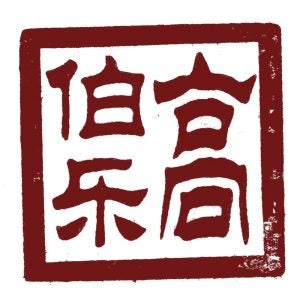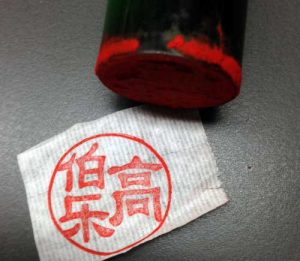WELCOME TO THE
GĀO BÓ LÈ ( 高伯乐) GALLERY OF ART
Curation is about uncovering a hidden story, and stories are about teaching you something. And at its core, teaching is a way to take an idea from the experience or world-view of one individual and getting another person to understand it without necessarily having the first-hand experience.
To begin with, I agree with the evolutionists who argue that communication of the un-experienced event may have been the core development of the brain that gave humans an advantage. If I can experience something and then communicate that understanding about the world to you – without you needing to have had the experience, per se – then the experience of an individual can become the experience of a collective whole.
From this, the communication arts evolve. Whether it is through painting, writing, oration, dance, music, theater… or formal education… we are taking the experiences and understandings we have gained (personally and privately) about the world, and we are thinking about how to express them in ways that others can appreciate, learn from, and even experience (empathetically or sympathetically) without needing to have the original experience first hand. I think this is why we gather in theaters, classrooms, churches, museums, around campfires and in concert venues, or plugged into our media sources.
I like the Arts because I like education, because I see the core purposes as being identical. As a scientist, I tend to be more lyrical than literal… and as a artist, I tend to be a little more analytical than inspired.
Curation of small parts of the world also plays a role in all of this. We collect and curate things as a way to tell another kind of story, in how the artifacts created by others affect us in the ways we want to tell the stories, sometimes hidden, that we see there.
THE STORY OF
Gāo Bó Lè ( 高伯乐)
Gāo Bó Lè ( 高伯乐) [plug it into Google Translate to hear it pronounced]
Professor Coppola’s adopted Chinese name is Gāo Bó Lè ( 高伯乐). The name is slightly phonetic with “Coppola” and was granted by Jen Zhu from the University of Michigan in 2005, after an interview. The meaning of the name corresponds with being able to have good judgment about identifying talents in others from their hidden qualities. The “family name” is Gāo and the “given name” is Bó Lè , which is a widely recognized name in the history of China.
Bó Lè is a mythological figure from the late Bronze Age (1550-1200 BCE) who tamed horses and recognized their talent, and was acknowledged in Chinese astrology as a star (likely located in Scorpio) who supervised the flying horses (TianMa: “heavenly horse”) in the heavens. Horse experts were valued in all of the ancient civilizations, and references to the importance of such individuals exist in both Greek and Roman cultures.
Bó Lè was the honorary name of Sūn Yáng (孙阳), who served Duke Mu of Qin (14th ruler of the Zhou Dynasty, from 659-621 BCE) as the person who could identify the qualities of a good horse from its appearance.
Duke Mu was the 14th ruler of the Zhou Dynasty, overseeing the state of Qin, one of the “Five Hegemons” that eventually gave rise to China under the first Emperor (Qin) in 220 BCE.
In Modern Standard Chinese, BoLe figuratively means “good judge of (especially hidden) talent,” from the idiom “BoLe-XiangMa” (Chinese: 伯樂相馬; literally: “Bole physiognomizing horse”). The Classical Chinese expression “Bole yigu” (Chinese: 伯樂一顧; literally: “one glance from Bole”) means “to instantly raise the ask price of something.”
BoLe is frequently associated with the fabled QianLiMa 千里馬 or “thousand-li horse,” which was supposedly able to gallop one thousand Li (approximately 400 km) in a single day. QianLiMa is a literary Chinese word for people with latent talent and ability. For centuries of Chinese history, horses had been considered animals capable of performing feats requiring exceptional strength and endurance. Possibly it is for this reason that from early times horses have been used allegorically to represent extraordinary people.
BoLe recognizing a QianLiMa is a metaphor for a wise ruler selecting talented shi, or “scholar-officials” (today: educators). Thus:geniuses working in obscurity were called thousand li horses who had not yet met their Bole. Delightfully enough, Professor Coppola’s only PhD student, Alan L. Kiste, has taken the name Ma QianLi (馬千里), granted by some of the faculty members at Tianjin University in 2017, which not only connects him in a strong and historically relevant way, but also sounds a lot like “martini,” which was where the conversation started.
The poet Han Yu (768-824) wrote: Only when an era has a man like BoLe are there any thousand-li horses. Thousand-li horses are common, but Boles, on the other hand, are rare.
As culturally loaded as the name BoLe is, the coupling with the family name “Gao” elevates it even more. Gao literally means “tall” or “high,” and in the context of this name, would signify “high ranking” (in a sense, then, a BoLe of BoLes). This is an attractive name for any educator, of course, and native Mandarin speakers recognize its significance immediately.



